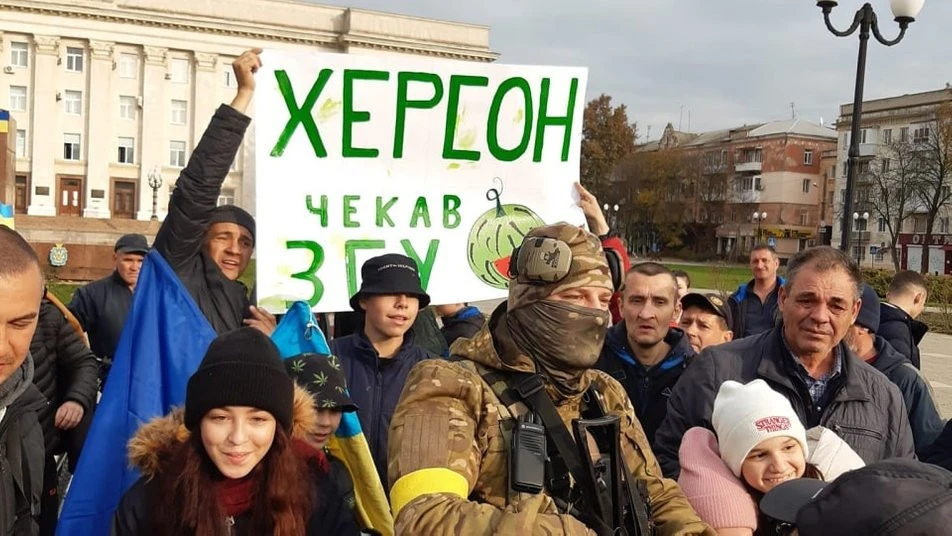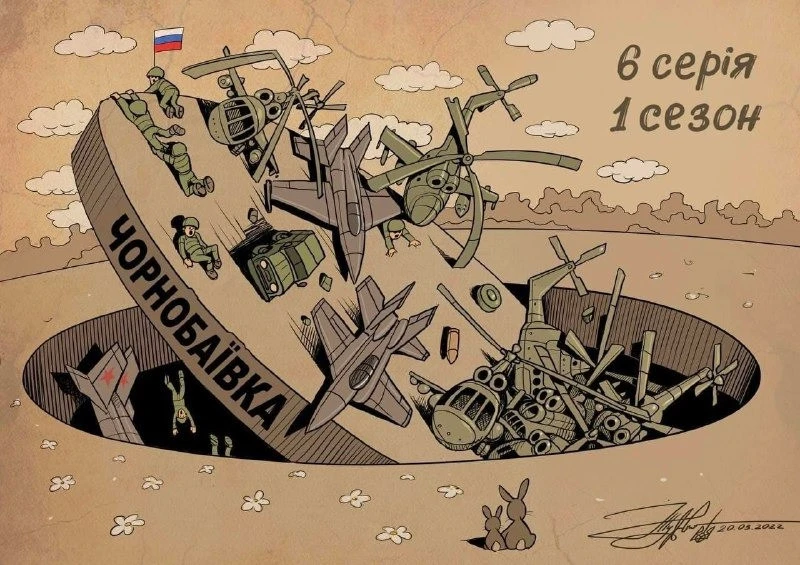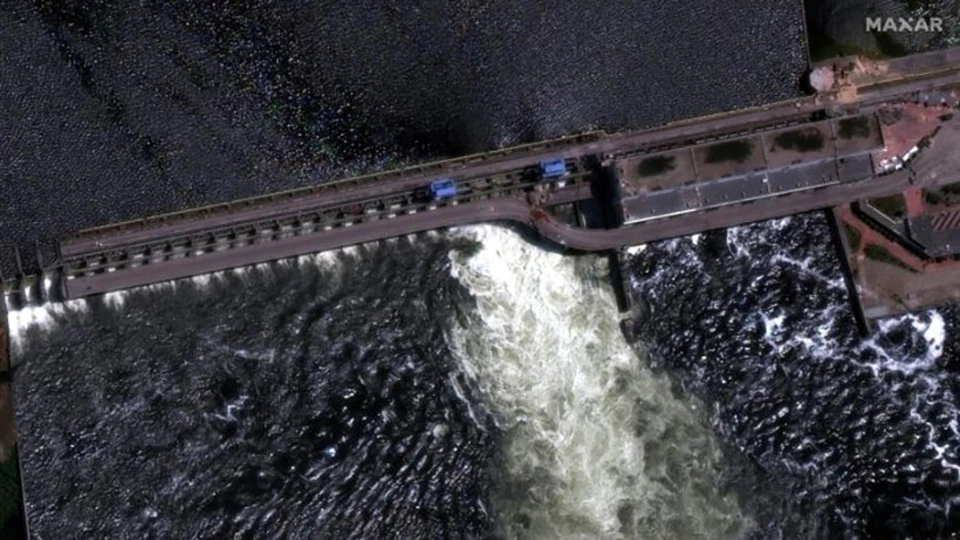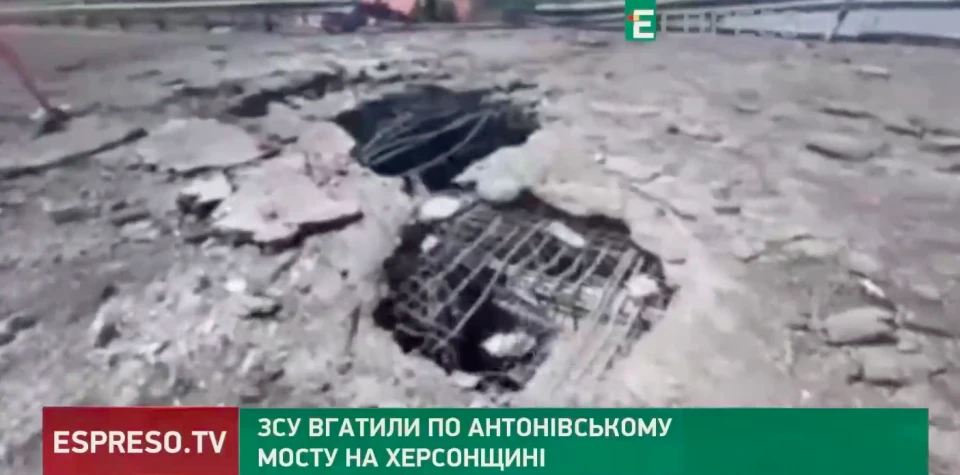
Ukrainian Kherson: first anniversary of liberation from occupation
11 November 2023 marks one year since the Ukrainian Armed Forces entered Kherson. Read our article to find out how the liberation took place and what changes have taken place since de-occupation
Espreso shares how the liberation of the right bank of the Kherson region took place, what conditions people lived in during the occupation, and what has changed since the liberation of a number of settlements. Also, what is known today about the left bank of the Kherson region and whether the region has plans to rebuild after full de-occupation.
The city was under occupation for eight and a half months. During this time, people experienced daily terror, psychological pressure and torture, but did not give up. During the liberation, Kherson residents greeted the Ukrainian Armed Forces with Ukrainian flags and shouts: "Kherson is Ukraine".
Kherson was and remains a Hero City despite the daily shelling and proximity to enemy positions.
Kherson during the temporary occupation
At the beginning of the war, Russian troops advanced across the territory of Ukraine at a fairly high rate. The capture of strategically important cities and regional centres was one of the occupiers' main goals. Kherson came under temporary occupation in early March 2022, despite significant resistance from the local population. Numerous rallies and actions in support of Ukraine were very massive, but the Russian side aggressively dispersed any protests and punished people in torture chambers with particular cruelty for disobedience.
Kherson residents united in underground militias and guards to counter looting, closely monitor and collect information about the occupiers and equipment, which they then passed on to the Ukrainian military. Such guerrilla groups also supported the morale of people during the occupation with patriotic graffiti and left "messages" to the occupiers. "The fact that we were charged for resistance probably helped many of us not to break, of course, not only not to go over to the enemy, but to continue to organise any kind of resistance by all possible means," said Andriy Andriushchenko, a resident of Kherson and a member of the underground resistance, during the united marathon.
Ukrainians immediately found themselves not only in conditions of enslavement and brutal aggression by Russian enemy, but also in a kind of information vacuum, where television and radio broadcasting were switched off. Over time, it became more and more difficult to get medicines in the city, and spontaneous markets became more and more numerous, as many citizens lost their jobs and did not want to cooperate with the occupiers. Detention, torture, captivity and illegal deportation are just a small list of what our citizens in the temporarily occupied territories (TOT) are going through.
Russian occupiers managed to seize the building of the Kherson City Council on 25 April, and the very next day, during a military meeting, they announced their representatives who were to take up leadership positions. They were Ukrainian traitors and collaborators. Volodymyr Saldo was appointed head of the regional administration, and Oleksandr Kobtsya was appointed mayor.
The Kremlin authorities, following a well-known scenario, intended to "legitimise" their presence on the TOT in Kherson. Therefore, a pseudo-referendum was held on 23-27 September, the results of which were known in advance.
After almost nine months of occupation, on 11 November, the Ukrainian military officially entered the hero city of Kherson. These 256 days are firmly etched in people's memories, although most people prefer to forget them as soon as possible.
"We were without information, that is, there was no communication, no electricity, no water, and when they said that our troops had entered, we cried, and I still can't speak calmly. We were just all crying and running outside like little children, rejoicing. Yes, there is shelling, it's hard now, but we understand that we are in our country," Tamara, a local resident, told Suspilne.

Photo: Espreso TV
How the liberation of the right-bank Kherson region took place
Preparations for the operation to liberate the right-bank part of Kherson region had been underway for a long time. The Russian military leadership was clearly aware of the strategic importance of Kherson. From this direction, a direct route to Mykolaiv, Odesa and other large cities opens up, which posed a great threat up to part of Vinnytsia region," explains Andriy Kovalchuk, commander of the South command, in an interview with Dmytro Komarov.
"The settlement of Posad Pokrovske was the point after which Russian occupiers' defence line was seriously reinforced, and they had been strengthening it for many months. This included concrete dugouts, fortification blocks, deep ditches, well-established firing positions, and more. It was from such areas that they attacked Ukrainian positions with all available heavy weapons, so it is very difficult to break through such a line. However, our artillery struck hard at the their positions," a sniper of the Khort unit said in the air of the joint marathon.
Further on, on the outskirts of Kherson, there is the famous Chornobaivka , whose airport has become a national meme and a nightmare for the occupiers. It became legendary due to the fact that the Russian military regularly brought columns of equipment, helicopters and personnel there, which time and again targeted the Ukrainian Armed Forces. In total, there were 26 successful episodes of explosions in Chornobaivka. Ordinary Ukrainians were keeping score, and even a comedy series called Chornobaivka was produced.

Photo: Author: Yuriy Zhuravel (Ukrainian Cultural Foundation)
Thanks to the successful offensive actions of the Ukrainian military and well-thought-out tactical manoeuvres, the Russian army began to retreat from the right bank, leaving minefields, destroyed houses and a pile of iron. We will be able to learn more about all the details of this historical event after the war.
Life after the de-occupation of Kherson
Today, Kherson and the entire right bank suffer from daily shelling, as Russia randomly hits the cities and villages of the region. Civilians are mostly injured. In addition, part of the Kherson region is still under occupation, and the locals have to fight for their right to freedom every day.
Every day, there is significant enemy shelling activity, and houses, shops, hospitals and other civilian objects are damaged and destroyed. However, there are days that become "black pages" in history. On 3 May 2023, the Russian aggressors fired 98 times at Kherson and the region, firing 539 shells from heavy artillery, tanks, Grad rockets, aircraft and UAVs. As a result, 23 people were killed, and the Kherson Regional State Administration declared three days of mourning in memory of the victims.
Life in the de-occupied territories is now quite difficult. Although Ukrainian services have restored telecommunications and other communications, those who fear shelling have already left communities and areas under constant fire. Despite this, the general trend is that there are more and more people in Kherson. "Constantly, not only here in Kherson. Even the small villages that are constantly under fire, where bombs come in. People there also do not want to leave their homes. Social workers, police, and volunteers are working with them now to persuade them, but we cannot force them," said Oleksandr Prokudin, head of the Kherson Regional Military Administration.
The Ukrainian authorities assure that all those responsible for the abuse of Ukrainians and aggression against civilians will be brought to justice. "All persons involved in crimes in Ukraine, both the highest Russian leadership and direct perpetrators, will be punished," the Foreign Ministry said.
Ukrainian services are constantly working to investigate the crimes of the Russian military and find collaborators who help the occupiers in the atrocities they commit on the territory of Ukraine. For example, the Security Service of Ukraine has recently identified 26 more members of the criminal group of the "Main Directorate of the Russian Ministry of Internal Affairs in Kherson Region" on the TOT, who abducted civilians and subjected them to brutal torture in torture chambers.
Man-made disaster: destruction of the Kakhovka hydroelectric power station
Another test for the southern region was the explosion of the Kakhovka hydroelectric power station on 6 June 2023. It is no exaggeration to call this an environmental disaster and an act of terrorism. About 80 settlements were in the danger zone of flooding, most of which are under temporary occupation.
As of today, the damage from the destruction of the Kakhovka hydroelectric power station is estimated at more than $11 billion, according to the UN Ukraine website. Of this amount, approximately $2.79 billion of the damage is to infrastructure and assets, and more than $1.1 billion is to housing. However, these figures are not final, as it is difficult to estimate the damage from the ecocide in the long term.
In October 2023, a joint report by the UN and the Government entitled Needs Assessment after the Kakhovka Hydroelectric Power Plant Dam Disaster was published, according to which towns and villages in Mykolaiv, Kherson, Zaporizhzhia and Dnipro regions were affected. About 100,000 Ukrainians were directly affected by the floods, with approximately 20,000-30,000 homes in the flood zone. The destruction of the power plant dam disrupted important aspects of life in southern Ukraine, including electricity generation, access to clean drinking water and the movement of river transport. This resulted in damage to housing, infrastructure and industry, irreversible environmental changes and the destruction of cultural heritage.

Photo: screenshot
Antonivskyi Bridge and its significance during the war
Another strategic object, the importance of which is understood by everyone, is the Antonivskyi Bridge, which crosses the Dnipro River and connects Kherson with the left bank. It is important from a logistical point of view, as it was through it that the occupiers supplied their troops with equipment and ammunition. In order to cut off the supply of weapons, the Ukrainian military attacked the crossing in the summer of 2022. The bridge was damaged but not destroyed.
Retreating from the right bank of the Kherson region, the Russian forces blew up several spans of the Antonivskyi bridge in order to stop the Ukrainian army's advance. Every day, the occupiers are heavily shelling everything near the crossing with bombs, rockets and missiles. Because of this, the village of the same name, Antonivka, which is a suburb of Kherson, is particularly affected.
According to the latest data from the Institute for the Study of War (ISW), Ukrainian troops are advancing further under the Antonivsky bridge, north of the town of Oleshky. This can be seen in geo-located imagery released on 27 October.
To date, Ukrainian officials have not confirmed this information and have stressed that it is too early to say whether Ukrainian positions on the left bank are being consolidated. "We continue to achieve good results in our struggle - both in counter-battery and other methods of work. But this is not yet subject to coverage, precisely to ensure that the result is very powerful and fixed, so that it is not such a short-term victory," said Natalia Humeniuk, head of the South opperational command, during the telethon.

Photo: live broadcast
Plans after the full de-occupation
Although part of the Kherson region is still under occupation, public figures and ordinary Kherson residents are optimistic about the region's prospects after full de-occupation. The New Generation Community Centre held its first conference, Steppe and Freedom: What Kherson Region Will Look Like After Liberation. The organisers believe that it is important to lay down the main vectors for the development and restoration of the Kherson region today.

In general, the issue of development of this region is very relevant. Rethinking the economic sphere, transformations in the social sphere, increasing the influence of the cultural sphere, the prospects for the development of the region and overcoming environmental damage are important for the development of the country as a whole.
- News














































